Rosetta Stone
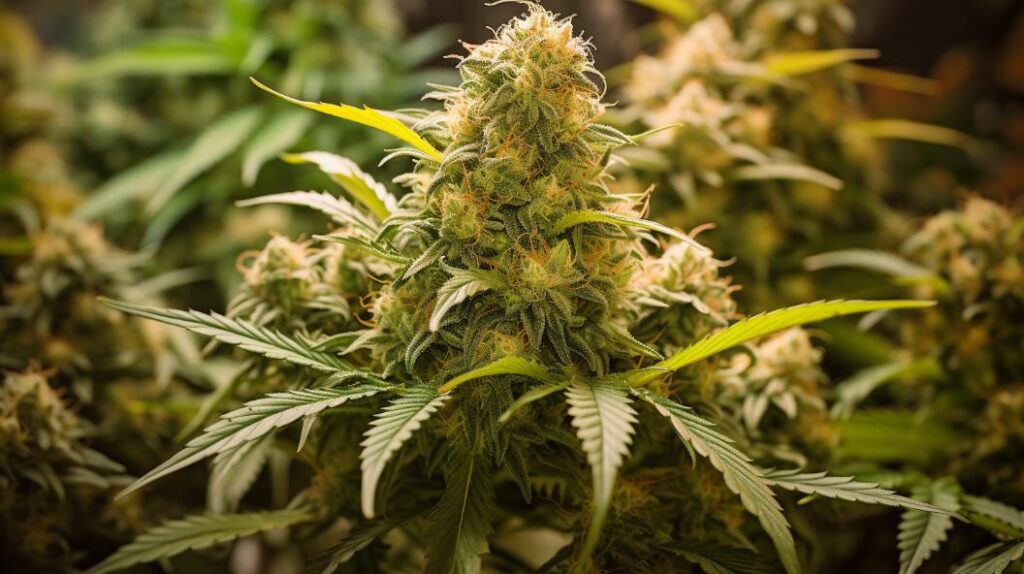
The Rosetta Stone strain embodies a meticulously balanced hybrid, deriving its genetics from the crossbreeding of P75 and Jack Herer, exhibiting a perfect equilibrium of 50% indica and 50% sativa. With its THC levels fluctuating between 20% to 22% and a CBD content around 1%, this strain offers a potent and balanced experience, straddling the line between mental invigoration and physical relaxation. Its rich terpene profile, featuring Myrcene, Limonene, and Caryophyllene, not only shapes its complex aroma and flavor but also underscores its potential therapeutic benefits. Users report effects ranging from tingling sensations and physical buzz to focused clarity and enhanced sociability, alongside medical indications for anxiety, insomnia, and depression management. However, it’s remarkable that some may experience adverse reactions, including anxiety and dry mouth.
Through exploration, one may discover deeper insights into its cultivation practices, medical applications, and historical significance, revealing the extensive appeal of the Rosetta Stone strain.
Genetic Lineage
The Rosetta Stone strain, a harmonious blend of P75 and Jack Herer, boasts a meticulously balanced 50% indica and 50% sativa genetic makeup, underscoring its versatile therapeutic potential. Engineered by the skilled breeders at Brothers Grim, this hybrid epitomizes the pinnacle of genetic selection, showcasing the robust lineage of its parent strains. The inclusion of Jack Herer, a renowned sativa dominant strain named after the legendary cannabis activist, imparts a cerebral elevation and creative buzz, characteristics that have solidified Jack Herer’s position in the cannabis pantheon.
On the other side, P75 contributes to the Rosetta Stone’s genetic scaffold with its indica-leaning properties, offering a soothing and calming counterbalance to Jack Herer’s energetic influence. This genetic interplay between the uplifting sativa and the grounding indica aspects facilitates a thorough therapeutic profile suitable for addressing a spectrum of ailments without heavily favoring one side of the spectrum over the other. The careful breeding by Brothers Grim establishes a consistent expression of these traits, making Rosetta Stone a confirmation of the potential of hybrid strains in achieving a balanced and potent experience.
This genetic architecture sets the stage for its varied applications in alleviating conditions such as nausea, chronic pain, and depression, highlighting the significance of genetic lineage in determining a strain’s therapeutic efficacy.
THC/CBD Content
Understanding the genetic lineage of the Rosetta Stone strain lays the groundwork for a deeper examination of its THC and CBD content, which profoundly influences its therapeutic efficacy and user experience. Derived from the crossbreeding of P75 and Jack Herer strains, Rosetta Stone embodies a balanced hybrid nature, harmonizing the characteristics of both indica and sativa. This equilibrium is not only reflected in its genetic makeup but also in its cannabinoid profile, which is pivotal for users seeking specific therapeutic benefits.
In terms of its cannabinoid composition, Rosetta Stone exhibits a notable profile:
- THC Content: Ranges between 20% to 22%, situating it in the higher potency bracket. This level of THC underpins its efficacy in managing conditions such as chronic pain, depression, and nausea.
- CBD Content: Typically stands at around 1%, which, although modest, contributes to the strain’s overall therapeutic profile.
- Hybrid Nature: Being a 50/50 blend of indica and sativa, it offers a balanced experience, potentially mitigating the extremities associated with pure strains.
- Privacy Policy Compliance: The cultivation and distribution of Rosetta Stone adhere to strict privacy policies ensuring that user data and information related to the purchase and use of the strain are protected. This assures consumers that the site is protected, maintaining confidentiality and security.
The combination of high THC and low CBD content, along with its balanced hybrid nature, makes the Rosetta Stone strain a preferred choice for users looking for a potent yet balanced effect.
Terpene Profile
Exploring the Rosetta Stone strain’s terpene profile reveals an intricate blend of myrcene, limonene, and caryophyllene, each contributing uniquely to the strain’s aromatic richness and therapeutic potential.
Myrcene, a dominant terpene in this profile, is renowned for its earthy, herbal aroma, which underpins the strain with a foundation of relaxing effects. This terpene’s presence is pivotal in crafting the calming essence characteristic of the Rosetta Stone strain, making it a choice selection for those seeking tranquility.
Limonene introduces a contrasting, citrusy uplift to the terpene ensemble, infusing the Rosetta Stone with a revitalizing, mood-elevating quality. Its zesty notes cut through the earthiness, offering a balanced and invigorating sensory experience. This terpene’s potential to enhance mood further enriches the strain’s appeal, providing a nuanced layer to its profile.
Lastly, caryophyllene adds a spicy, peppery dimension, rounding out the flavor palette with its distinctive aroma. Known for its potential anti-inflammatory properties, this terpene complements the blend, contributing to the therapeutic complexity of the Rosetta Stone strain. The synergy among these terpenes enhances both flavor and effects, crafting a unique and immersive experience for the connoisseur.
Effects
While the Rosetta Stone strain is celebrated for its rich terpene profile, its effects offer a balanced amalgamation of mental clarity and physical relaxation, making it a versatile choice for a wide range of users. This unique blend, derived from the legendary White Widow and the flavorful Ginger Ale strains, delivers a multifaceted experience that is both invigorating and calming. The distinct characteristics of the Rosetta Stone strain manifest through a series of pronounced effects:
-
Tingling Sensation: Users report a noticeable tingling that spreads across the body, providing a gentle yet invigorating physical buzz that complements the strain’s cerebral effects.
-
Focused Clarity: Despite its higher THC potency, Rosetta Stone facilitates a state of focused clarity, allowing users to engage in creative or analytical tasks with renewed vigor.
-
Social Enhancer: The strain’s capacity to induce talkativeness makes it an excellent choice for social gatherings, breaking down barriers of anxiety and facilitating engaging conversations.
-
Negative Aspects: While the benefits are plentiful, potential users should be aware of the possible negatives, including feelings of anxiety, paranoia, and dry mouth, which are common to potent cannabis strains.
This information is protected by reCAPTCHA to safeguard the authenticity of user experiences shared online.
Medical Uses
Moving beyond the pleasurable effects of the Rosetta Stone strain, its potential medical applications merit significant attention, particularly in managing anxiety, insomnia, and depression. The strain’s calming effects have been reported by users to play a pivotal role in alleviating symptoms of anxiety. This aspect is critical, as managing symptoms effectively can lead to improved daily functioning and quality of life for individuals plagued by anxiety disorders.
Furthermore, for those struggling with insomnia, the Rosetta Stone strain could provide a therapeutic benefit by aiding in the attainment of a better night’s sleep. The significance of sleep in overall health cannot be overstated, and the potential of this strain to contribute to restful sleep presents a valuable avenue for exploration.
Depression, a condition that affects millions worldwide, may also see relief through the use of the Rosetta Stone strain. Patient testimonials have highlighted its ability to promote a more positive and uplifted mood, a critical component in the battle against depressive symptoms. Additionally, the strain’s effects on focus and talkativeness may offer therapeutic benefits for various medical conditions, demonstrating its versatile potential in the domain of medical cannabis.
Flavor and Aroma
The Rosetta Stone strain distinguishes itself through a complex bouquet of aromas, prominently featuring musk, jasmine, and anise, paired with a flavor profile marked by pepper, floral, and mint nuances. This unique combination caters to a wide range of taste preferences, offering a distinctive and pleasurable sensory experience. The strain’s potent and distinctive aroma contributes not only to its appeal among cannabis connoisseurs but also suggests potential applications in aroma therapy, leveraging its strong, therapeutic scents.
The following aspects highlight the strain’s appeal regarding flavor and aroma:
-
Taste Preferences: The Rosetta Stone strain aligns with diverse taste preferences through its intricate flavor combinations, providing a unique taste experience that is both invigorating and stimulating.
-
Aroma Therapy Potential: Its strong and distinctive aroma points towards therapeutic uses, suggesting benefits in relaxation and mood enhancement.
-
Flavor Combinations: The strain’s flavor profile, with its blend of pepper, floral, and mint, demonstrates a sophisticated interplay of tastes that appeal to refined palates.
-
Consumer Feedback: Users often highlight the taste of the Rosetta Stone strain as a key attribute, underscoring its role in the strain’s popularity and user satisfaction.
Appearance
Building on its notable flavor and aroma characteristics, the Rosetta Stone strain also boasts a visually striking appearance, marked by its dense, compact buds adorned with vibrant green leaves and orange hairs. This particular cultivar is distinguished by an exceptional layer of trichomes that confer a frosty appearance to the buds, signaling high levels of resin production. Such a feature not only enhances the strain’s aesthetic appeal but also serves as an indicator of its potency and the presence of a generous concentration of cannabinoids and terpenes.
The flowers themselves are enveloped in a sticky resin that further emphasizes the strain’s visual appeal, creating a tactile sense of quality that can be appreciated by both connoisseurs and casual users alike. The resinous and sticky texture, combined with the frosty appearance of the trichomes, positions the Rosetta Stone strain as a standout example of high-quality cannabis. The moderate to high THC content underscored by this resin production contributes to the overall potency of the strain, making its visual attributes not just a matter of beauty but a hallmark of its strength and efficacy.
Grow Information
Cultivating the Rosetta Stone strain demands an indoor environment to achieve the best growth conditions and yield outcomes. Its unique requirements and characteristics make it an intriguing option for growers seeking to maximize their harvest while managing plant height and space efficiently.
For optimal cultivation, consider the following:
-
Indoor Techniques: Implementing a controlled indoor grow setup is essential for Rosetta Stone. This environment allows for precise management of lighting, temperature, and humidity, all of which are necessary to the strain’s development and flowering cycle. Utilizing indoor cultivation methods ensures consistency and quality in the final product.
-
Sea of Green (SOG) Method: To achieve maximum yield, the Sea of Green method is highly recommended. This technique involves growing many small plants closely together, rather than fewer large plants, which can greatly increase yield per square meter.
-
Flowering Time: Rosetta Stone has a relatively short flowering time of 7-8 weeks. This quick turnaround allows for efficient use of space and resources, enabling more frequent harvests throughout the year.
-
Plant Height Management: With plants reaching up to 120 cm, managing plant height is crucial. Training techniques such as topping and pruning help maintain a manageable size, ensuring that each plant receives adequate light and air circulation, which is essential for healthy growth and maximum yield.
Adverse Effects
While Rosetta Stone strain offers numerous cultivation benefits, potential users should be aware of its adverse effects, including anxiety, paranoia, and dry mouth. These side effects underscore the importance for a cautious approach when engaging with this particular cannabis variant. Understanding the full spectrum of potential reactions is vital for both novice and experienced users alike.
Feeling anxious is a commonly reported adverse effect of the Rosetta Stone strain. This sensation can range from mild unease to more intense feelings of anxiety. It’s a critical consideration for individuals with predispositions to anxiety disorders. Similarly, paranoia, another psychological side effect, can manifest in users, potentially exacerbating pre-existing mental health conditions or inducing unwarranted feelings of fear and suspicion.
Moreover, dry mouth, also known as cottonmouth, is a prevalent physical side effect associated with the Rosetta Stone strain. This condition not only causes discomfort but can also lead to oral health issues if not adequately managed. Users are advised to stay hydrated to mitigate this effect.
Comparisons with Similar Strains
In comparing the Rosetta Stone strain to its counterparts, its THC content of 20-22% positions it as a notably potent option within the hybrid cannabis market. This level of potency comparison underscores its ability to deliver strong effects while maintaining a balance that is both energizing and calming. The Rosetta Stone strain stands out due to its unique genetic makeup, derived from crossing P75 and Jack Herer, which contributes to its nuanced effects profile.
Key comparisons include:
-
Potency Comparison: When juxtaposed with other hybrid strains, Rosetta Stone’s high THC level guarantees a more intense experience, suitable for both recreational and medicinal users seeking substantial relief or a profound psychoactive journey.
-
Euphoria Balance: Unlike strains that lean heavily towards either sativa or indica effects, Rosetta Stone provides a harmonious blend of euphoria and relaxation, making it ideal for those seeking a balanced high.
-
Activity Pairing: The strain’s energizing aspects make it particularly fitting for daytime activities, distinguishing it from others that might induce lethargy or are better suited for evening use.
-
Therapeutic Applications: Its effectiveness in managing conditions like nausea, chronic pain, and depression places Rosetta Stone in a special category, offering therapeutic benefits alongside its recreational appeal.
The sophisticated blend of potency, euphoria balance, and suitability for various activity pairings cements Rosetta Stone’s position as a distinguished option among hybrid strains.
Research and Studies
Exploring the Rosetta Stone strain further, recent studies and research efforts have shed light on its therapeutic potential and unique genetic composition. Its balanced 50% indica and 50% sativa makeup, combined with a THC content ranging from 20% to 22%, positions it as a potent choice for therapeutic applications. Research has particularly focused on its efficacy in managing conditions such as nausea, chronic pain, and depression, highlighting its role in enhancing overall well-being with a well-rounded high suitable for daytime use.
Investigations into cultivation techniques for the Rosetta Stone strain have revealed insights into optimizing its genetic potential. Advanced breeding methods involving its parent strains, P75 and Jack Herer, have been scrutinized to understand the synergy that produces its notable energy and motivation-boosting effects.
Consumer preferences have also been a focal point of study, with findings indicating a growing demand for strains that offer balanced effects for both recreational and medicinal users.
Moreover, legal implications surrounding the cultivation and distribution of the Rosetta Stone strain have prompted discussions among policymakers. The strain’s therapeutic benefits and consumer demand necessitate a reevaluation of regulatory approaches to make safe and legal access available.
History and Origin
Exploring the lineage of the Rosetta Stone strain, it was meticulously crafted by Brothers Grimm breeders through a strategic crossbreeding of a female Ginger Ale plant with a male White Widow plant. This innovative hybridization process underscores not only the skill and insight of the breeders but also the strain’s unique characteristics, which have contributed to its historical significance and modern popularity.
-
Breeder Insights: The Brothers Grimm’s choice of parent strains highlights their expertise in selecting genetics that complement each other, producing a hybrid with balanced effects and a pleasant aroma.
-
Cultivation Techniques: Rosetta Stone’s cultivation yields impressive results, typically generating 1-2 pounds per square meter indoors. This efficiency is a sign of the strain’s robust genetics and the advanced cultivation techniques employed.
-
Historical Significance: Since its creation, Rosetta Stone has gained a reputation for its clear, mind-warming, tranquil, and sociable effects, making it a favorite among cannabis enthusiasts.
-
Modern Popularity: Its moderate THC content, ranging from 20% to 22%, guarantees a potent yet manageable experience, further solidifying its status in contemporary cannabis culture.
The Rosetta Stone strain embodies the pinnacle of cannabis breeding, offering a harmonious blend of potency, yield, and sensory experience.
Frequently Asked Questions
Is Rosetta Stone a Good Strain?
Evaluating a strain’s quality involves considering its genetics, cultivation difficulty, and flavor profile. Rosetta Stone, with its balanced genetics, moderate cultivation difficulty, and smooth flavor profile, is highly regarded for its potent and versatile effects.
What Are the Heaviest Hitting Indica Strains?
Among the heaviest hitting Indica strains, notable for their potent effects and relaxation properties, are Northern Lights, Granddaddy Purple, and Purple Kush. These strains offer robust sleep aid qualities, distinct flavor profiles, and benefit from specific Indica cultivation tips.
What Strain Has the Strongest Effects?
The strongest effects in cannabis strains are influenced by terpene profiles, Sativa vs. Indica genetics, and cultivation methods. These factors contribute to a strain’s potency, affecting its psychoactive and therapeutic outcomes for users.
What Is the Best Strain to Get You High?
The best strain to achieve a high depends on individual marijuana tolerance levels, intended recreational vs medical use, and the preferred consumption methods. Factors such as THC content and strain genetics play critical roles in effectiveness.

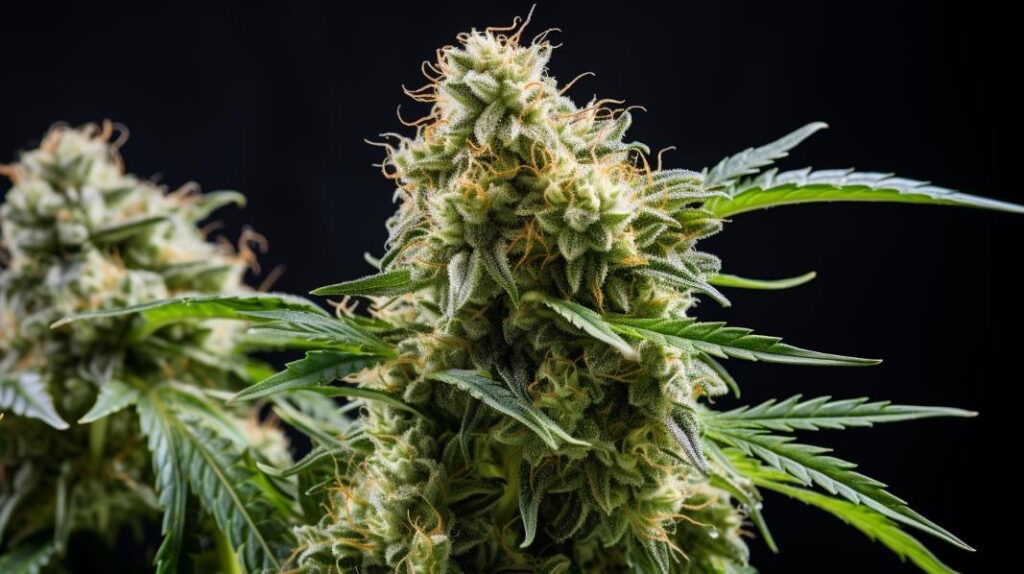
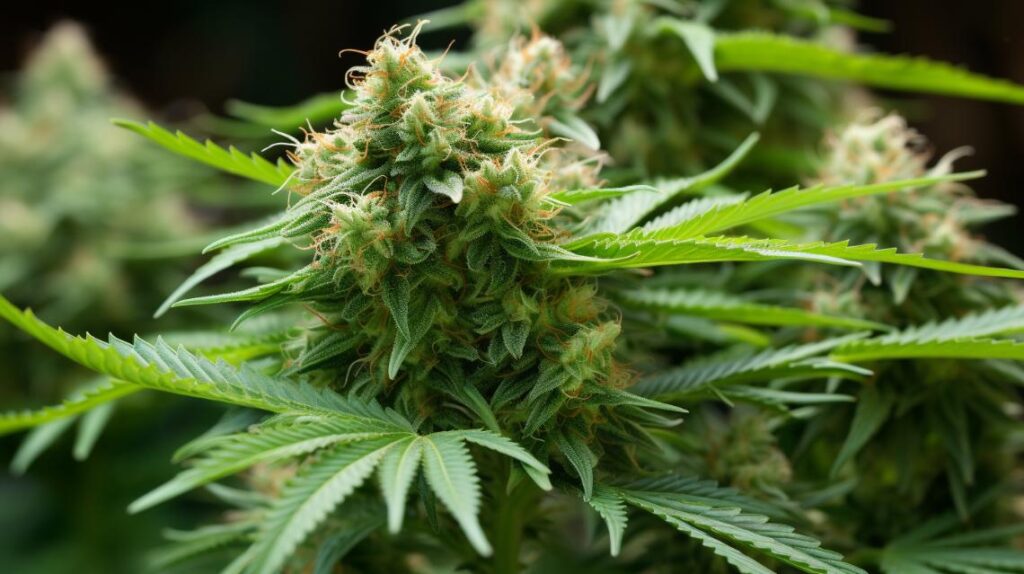
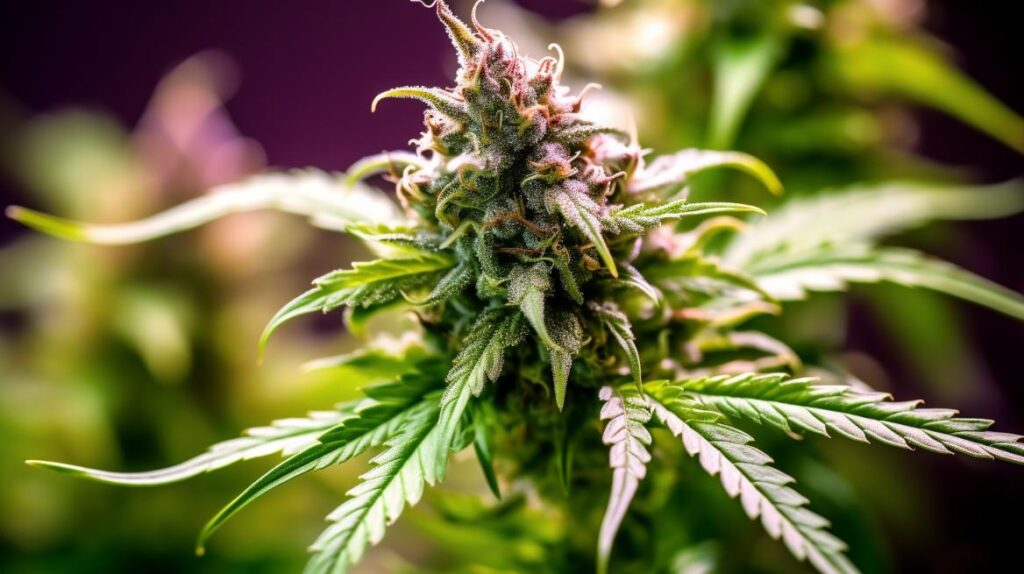
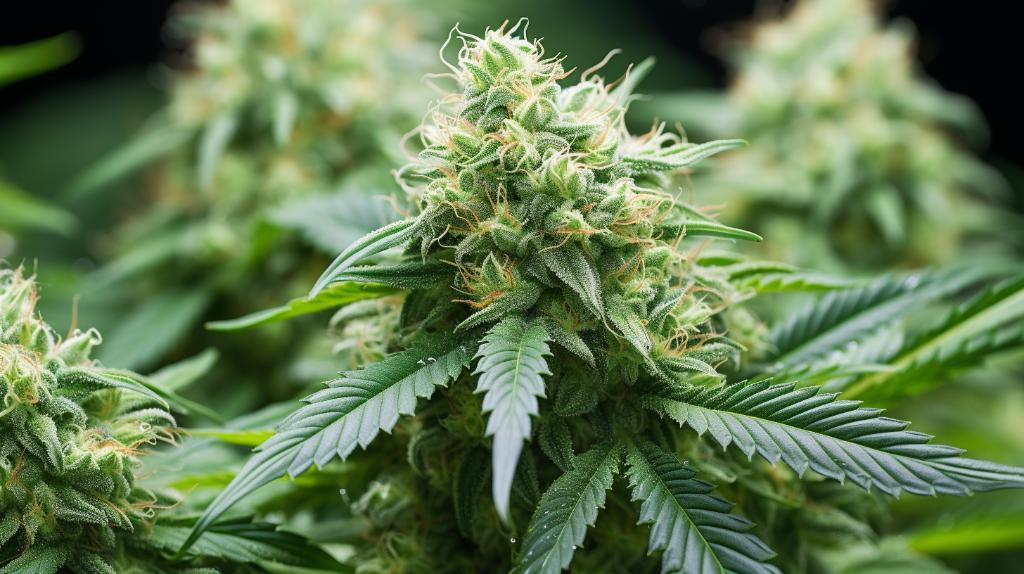
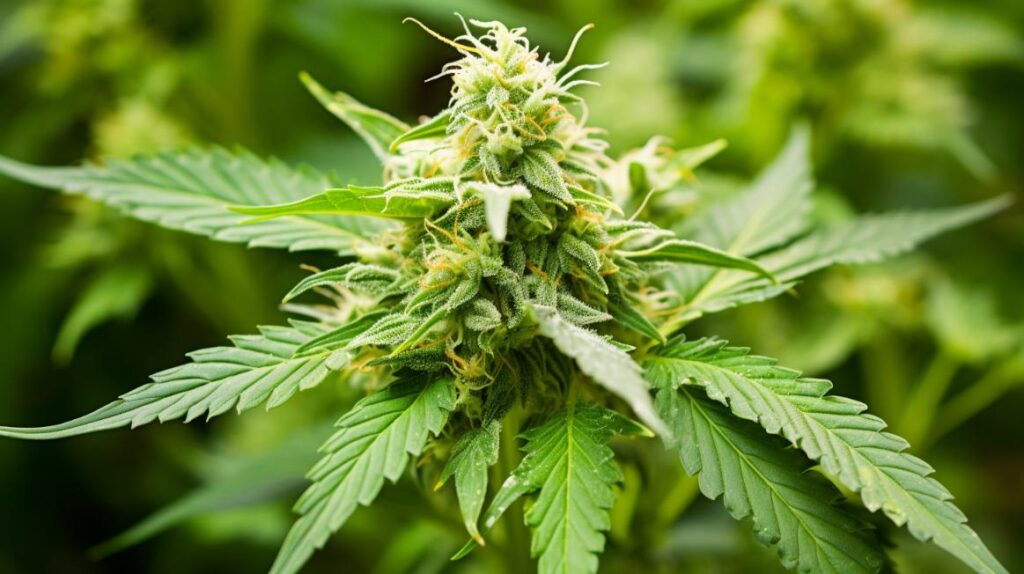

Responses